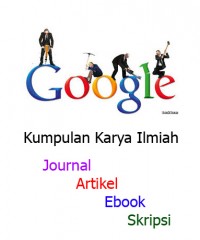Detail Cantuman

Artikel
Health financing in the African Region: 2000–2009 data analysis
Abstract
Background:In order to raise African countries probability of achieving the United Nations Millennium Development Goals by 2015, there is need to increase and more efficiently use domestic and external funding to strengthen health systems infrastructure in order to ensure universal access to quality health care. The objective of this paper is to examine the changes that have occurred in African countries on health financing, taking into account the main sources of funding over the period 2000 to 2009.
Methods:Our analysis is based on the National Health Accounts (NHA) data for the 46 countries of the WHO African Region. The data were obtained from the WHO World Health Statistics Report 2012. Data for Zimbabwe was not available. The analysis was done using Excel software.
Results:Between 2000 and 2009, number of countries spending less than 5% of their GDP on health decreased from 24 to 17; government spending on health as a percentage of total health expenditure increased in 31 countries and decreased in 13 countries; number of countries allocating at least 15% of national budgets on health increased from 2 to 4; number of countries partially financing health through social security increased from 19 to 21; number of countries where private spending was 50% and above of total health expenditure decreased from 29 (64%) to 23 (51%); over 70% of private expenditure on health came from household out-of-pocket payments (OOPS) in 32 (71%) countries and in 27 (60%) countries; number of countries with private prepaid plans increased from 29 to 31; number of countries financing more than 20% of their total health expenditure from external sources increased from 14 to 19; number of countries achieving the Commission for Macroeconomics and Health recommendation of spending at least US$34 per person per year increased from 11 to 29; number of countries achieving the International Taskforce on Innovative Financing recommendation of spending at least US$44 per person per year increased from 11 to 24; average per capita total expenditure on health increased from US$35 to US$82; and average per capita government expenditure on health grew from US$ 15 to US$ 41.
Conclusion:Whilst the African Region (AFR) average government expenditure on health as a per cent of THE increased by 5.4 per cent, the average private health expenditure decreased by the same percentage between 2000 and 2009. The regional average OOPS as a per cent of private expenditure on health increased by 4.9 per cent. The average external resources for health as a percentage of THE increased by 3.7 per cent. Even though on average the quantity of health funds have increased, we cannot judge from the current study the extent to which financial risk protection, equity and efficiency has progressed or regressed. In 2009 OOPS made up over 20% of total expenditure on health in 34 countries. Evidence shows that where OOPS as a percentage of total health expenditure is less than 20%, the risk of catastrophic expenditure is negligible. Therefore, there is urgent need for countries to develop health policies that address inequities and health financing models that optimize the use of health resources and strengthen health infrastructure. Increased coverage of prepaid health-financing mechanisms would reduce over-reliance on potentially catastrophic and impoverishing out-of-pocket payments
Ketersediaan
Tidak ada salinan data
Informasi Detil
| Judul Seri |
-
|
|---|---|
| No. Panggil |
Artikel
|
| Penerbit | Springer : Congo., 2013 |
| Deskripsi Fisik |
-
|
| Bahasa |
English
|
| ISBN/ISSN |
doi:10.1186/1755-768
|
| Klasifikasi |
NONE
|
| Tipe Isi |
-
|
| Tipe Media |
-
|
| Tipe Pembawa |
-
|
| Edisi |
International Archives of Medicine2013,6:10
|
| Subyek | |
| Info Detil Spesifik |
-
|
| Pernyataan Tanggungjawab |
-
|
Versi lain/terkait
Tidak tersedia versi lain
Lampiran Berkas
Informasi
DETAIL CANTUMAN
Kembali ke sebelumnyaXML DetailCite this

Perpustakaan Fakultas Kedokteran dan Ilmu Kesehatan
Lorem ipsum dolor sit amet, consectetur adipiscing elit. Duis nec cursus mauris. Nullam vel nunc quis ipsum laoreet interdum. Maecenas aliquet nec velit in consequat.
Info selengkapnya







